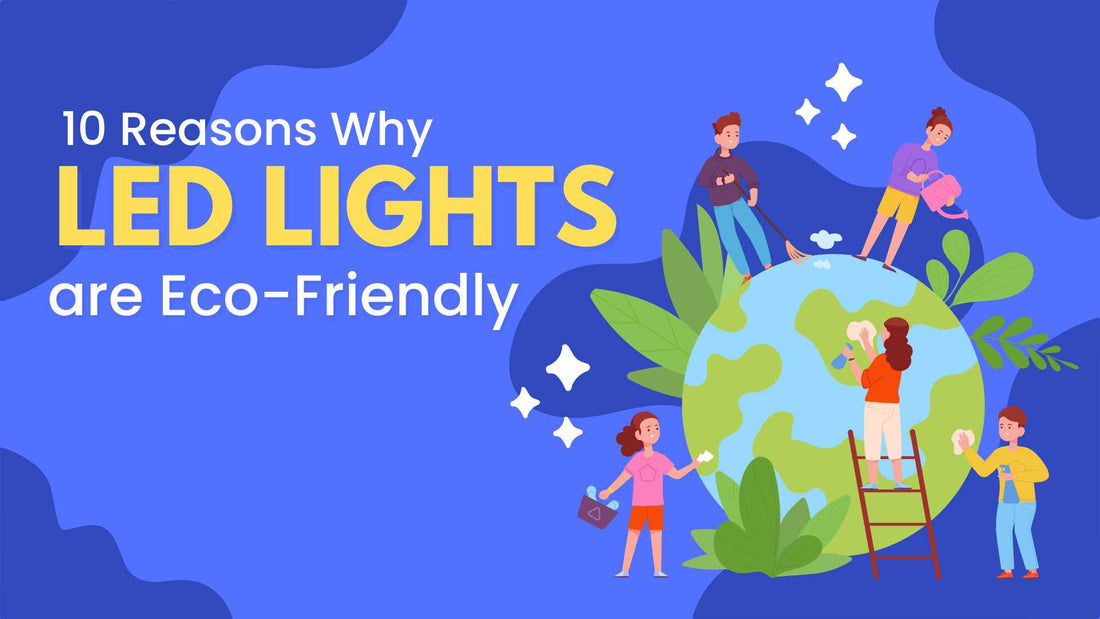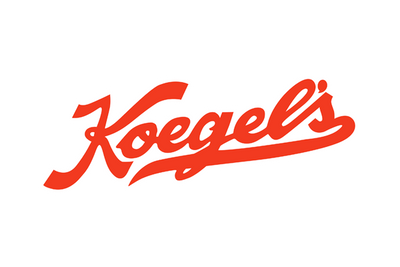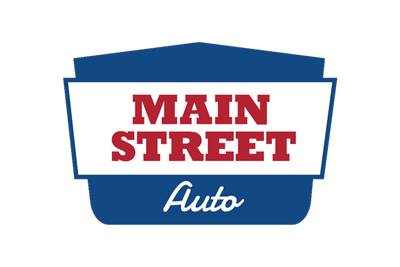
Eco-Friendly LED Lights - 10 Reasons Why They Are Environmentally Friendly
Chris DiproseShare
We live in a modern World where lighting our homes, businesses, streets, and everywhere humans are in cities is necessary.
At the same time, we must consider how our actions impact the environment around us, and mitigating our carbon footprint is important.
Lighting technology has improved over the last 20 years, and the humble LED light is at the forefront of all those improvements.
Compared to conventional light bulbs, LED lights are more energy-efficient, require fewer inputs to make, are brighter, and have a significantly longer lifespan - they are the World's most superior form of lighting today.
- Energy efficient: LEDs convert 95% of electrical energy into light, while incandescent bulbs convert only 10%.
- No toxic elements: LEDs don't contain any harmful chemicals (like mercury) or gases.
- Emits little heat: LEDs are safe to touch even after hours of operation.
- Long lasting: LEDs last 50,000 to 100,000 light hours.
- Chemical-free: LEDs don't use mercury or gases and are the safest form of lighting to manufacture.
- Noise-free: LEDs emit light but make no noise.
- Bug-free: Bugs and insects aren't attracted to LED lighting.
- Recyclable: LED neon flex, lights, and bulbs can all be recycled.
Below, I cover ten reasons LED lights are eco-friendly and provide professional tips and advice.
Energy Efficient
LED lights convert 95% of their energy into light, wasting only 5% as heat.
Conversely, incandescent bulbs convert 10% of their energy into light, wasting 90% as heat.
This is why LED lights are safe to touch and produce very little heat, whereas the old-school lightbulb gets extremely hot and is unsafe to touch.
LED lights are typically powered by 12 volts of electricity.
This means significant energy savings by switching traditional lighting to LED lighting solutions.
Pro tip: Switch your lights to LEDs, saving you money.
Reduced Light Pollution
While brighter than incandescent, LED lights focus more on the direction, reducing scattered light.
Scattered light affects many animals, including turtles, migrating birds, and all nocturnal animals. LED light focuses the illumination direction and doesn't flood the surrounding area with unnecessary light, reducing light pollution.
Pro tip: If you're worried about the nocturnal animals in your environment, consider using LED lights for your outdoor spaces.

Low Heat Emissions
LED lights emit negligible heat, making them the cooler option in the literal sense. This characteristic results from their high electricity-to-light conversion efficiency - up to 95% in most cases.
Pro tip: If you're worried about global warming, LED lights produce minimal heat and have a low contribution to global warming.


Built to Last: Longevity of LED Lighting
LEDs can have 50,000 to 100,000 light hours - in real terms, this is usually 12 to 15 years of lifespan.
Pro tip: Switch out your existing incandescent bulbs for LED bulbs - they are longer-lasting, which means fewer lights are needed.

Chemical & Gas Free
LED bulbs, light bulbs, and signs use light-emitting diodes (or LEDs for short) that don't require any gases or chemicals—most notably, no mercury is needed. Incandescent lights use mercury.
They also have no glass parts and don't create a shatter hazard.
Pro tip: LED lighting uses no gases or dangerous chemicals and is much safer for people involved in the manufacturing processes. It is also glass-free and shatter-resistant.

Noise-Free Lighting
LED lighting does not generate vibration or humming noise unlike other lighting technologies. It is quiet, and people working near LED lighting will not complain about noise.
Pro tip: LEDs don't create noise pollution, making them perfect for indoor workspaces and office environments.
Bug-Free
A common problem with incandescent light bulbs is that they attract insects. They produce heat and a specific light wavelength that attracts bugs.
On the other hand, LED lighting is free from heat and the specific wavelength that attracts bugs, making it a bug-free form of lighting.
Pro tip: Switch your outdoor lights near your home, deck, or porch to LED bulbs - they won't attract bugs.

A Friend to Flora: Promoting Plant Growth
LED lights benefit plant growth, unlike conventional bulbs, which can negatively impact plant growth by increasing the surrounding area's temperature. LED lights emit cool light, making them a safe choice for gardens and other plant-filled spaces.
Pro tip: Switch to LED lighting for lighting in greenhouses or near indoor plants, as it has no negative impacts on them.

Reduced Carbon Footprint
LED lighting has a smaller carbon footprint than incandescent or fluorescent lights. One LED bulb emits 80% fewer greenhouse gases than an incandescent bulb of the same luminosity.
Pro tip: Switching to LED neon signs is a simple and effective way to reduce carbon emissions.
Recyclable Option
LED bulbs, lights, and signs can all be safely recycled when they eventually end their lengthy life cycle. Unlike other types of lighting, LEDs do not contain mercury or other harmful substances and can be safely melted down and recycled - they are a truly sustainable lighting option.
Pro tip: If an LED bulb burns out, you can put it in the recycling bin - to be turned into another useful product.
In Summary
LEDs are known for their brightness and long lifespan, and as I've covered above, they offer numerous environmental benefits. This is one reason we make all our neon signs using LED neon flex. Our neon signs are eco-friendly, cost-effective, and efficient advertising solutions.
By using LED lighting options and choosing LED neon signs for your advertising, you’re making a smart choice and doing your part to protect our planet.
Talk with our team about your LED neon sign project!
How LED Lights are Manufactured
FAQ
What is an LED?
A light-emitting diode, or LED for short, is a semiconductor that emits light when an electric current is passed to it.
Are LED lights eco-friendly?
While they require petrochemicals to manufacture, they are the most eco-friendly lighting technology currently available.
What is the most environmentally friendly lighting?
LED lighting is the most eco-friendly option to buy in 2024. It is brighter, produces less heat, and uses about 1/5th the power of an equivalent incandescent bulb. Its energy efficiency is excellent, converting 95% of electricity to light.
Which is more eco-friendly, LED or CFL?
Light-emitting diodes (LEDs) are more eco-friendly than compact fluorescent lights - they don't require mercury or any gases to operate. They also last three times longer and require about one-third of the power to operate.
Are LED lights sustainable?
LED lights use plastic, silicone chips, metal wiring, boxes, and backing. While these all rely on petrochemicals, LED lighting is still considered the least impactful on the environment compared to all other lighting technologies.
How does LED lighting help climate change?
LED lighting has a reduced carbon footprint when compared to traditional lighting technologies. LEDs require far fewer resources to manufacture and much less energy to power an equivalent amount of luminosity, as measured on a lux meter.
What is a CFL?
A compact fluorescent light has a significantly reduced energy consumption compared to an incandescent bulb. However, it still contains mercury and argon gas inside the glass tube.







